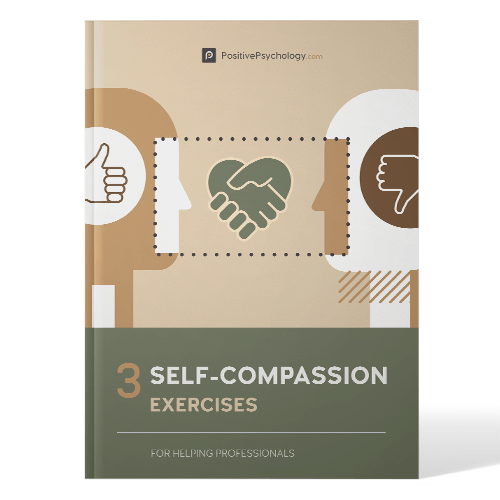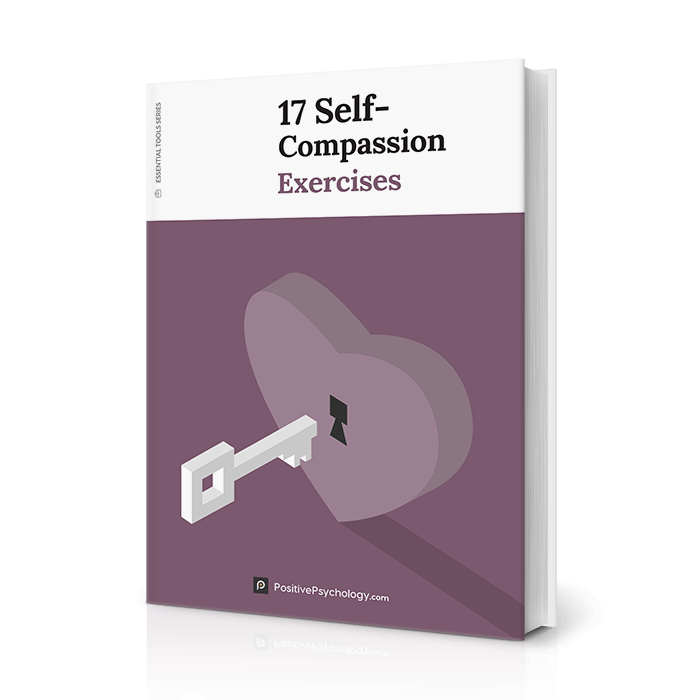Measuring Self-Efficacy with Scales and Questionnaires
 Self-efficacy is all about your belief in your own abilities as it pertains to dealing with various situations.
Self-efficacy is all about your belief in your own abilities as it pertains to dealing with various situations.
Self-efficacy can play a big role in your life, impacting not only how you feel about yourself but also how successful you might be.
According to Albert Bandura, an influential social cognitive psychologist, self-efficacy is defined as:
The belief in one’s capabilities to organize and execute the courses of action required to manage prospective situations.
Self-efficacy is a hot topic amongst psychologists and educators, and it can have a huge impact on just about everything from psychological states to motivation to behavior.
When it comes right down to it, our belief in our own ability to succeed plays a key role in how we think and how we feel. It also helps us establish our place in the world and can even determine what kind of goals we set and how we go about accomplishing those goals.
In this article, we will examine tools to measure self-efficacy as well as how self-efficacy affects children and academics.
Before you read on, we thought you might like to download our three Self-Compassion Exercises for free. These detailed, science-based exercises will not only help you increase your compassion and confidence but will also give you the tools to help your clients, students or employees show more kindness and compassion towards themselves.
This Article Contains:
- How to Best Measure Self-Efficacy
- What Types of Assessment Tools are Available?
- What Scale is Recommended for Adults?
- A Look at Scoring
- Bandura’s General Self-Efficacy Scale
- Children’s Self-Efficacy Scale
- Academic Self-Efficacy Scale for Students (Zimmerman)
- Career Decision Self-Efficacy Scale
- Self-Efficacy Scale for Exercise
- Other Recommended Surveys and Questionnaires (Incl. PDF)
- Guide for Constructing Self-Efficacy Scales
- The Self-Efficacy Scale Construction and Validation
- A Take-Home Message
- References
How to Best Measure Self-Efficacy
Self-efficacy is critically important when it comes to protecting yourself against psychological stress.
While there are many tools for measuring self-efficacy, the SES or Self-Efficacy Survey is a good one to start with because it is based upon Bandura’s socio-cognitive theory. (Self-Efficacy Survey: A new assessment tool, 2012, March 16).
The SES is designed to evaluate ten functional areas of life:
- Intellectual
- Family
- Educational
- Professional
- Social
- Religious
- Erotic
- Moral
- Life
- Health
For the survey, 150 items were created with 15 items per number. Two expert judges examined each item for validity.
Unacceptable and irrelevant items were then removed, leaving 130 remaining items. The remaining questions were then included and used with 246 participants.
Once the internal consistency values were computed, 26 items were then removed, leaving 104. These 104 were then applied to 180 subjects.
Each question contains a six-point Likert scale with 1 representing a strong disagreement and 6 representing a strong agreement of each subject’s perceived self-efficacy in different areas of life.
- Intellectual (High intellectual means subject is satisfied with their intellectual performance and degree of difficulty.)
- Family (High family means subject believes their family trusts them and offers them the social and emotional support needed.)
- Educational (High educational means subject is satisfied with the education they are receiving.)
- Professional (High personal means subject is satisfied with their professional position or professional capabilities by colleagues.)
- Social (High social means one is satisfied with their social status and recognition.)
- Religious (High religious means one is at peace with their divinity and faith.)
- Erotic (High moral means one is satisfied with their intimate life.)
- Moral (High moral means one is at peace with decisions in terms of good and evil.)
- Life Standard (High life standard means satisfaction with personal wellbeing.)
- Health (High health means one feels good physically and emotionally.)
The survey was administered to 426 undergraduate students with 49% female and 51% male, ages 25-55. The students resided in a university in Bucharest, Romania.
The first survey was administered to a sample of 246 students with the final pool of 104 remaining items administered to a sample of 180 participants.
Here you can access the full study of the Self-Efficacy Survey: a new assessment tool.
Self-efficacy plays a major role in how you approach goals, tasks, and challenges.
If you have a strong self-efficacy you:
- Tend to view challenging problems as simply another task to be mastered.
- Develop a much deeper interest in the activities you do participate in.
- Tend to form a stronger sense of commitment to your activities and interests.
- Might actually recover more quickly when it comes to disappointments and setbacks.
If you have a low self-efficacy you:
- Might avoid challenging tasks.
- May believe that difficult tasks or situations are beyond your control or capability.
- Tend to focus on negative outcomes or personal failures more often.
- Have a tendency to lose confidence quickly or lose faith in your personal abilities.
What Types of Assessment Tools are Available?

One of these is the New General Self-Efficacy Scale by Chen, Gully, and Eden (2001).
This scale provides a measure of self-efficacy that serves as an improvement to the original self-efficacy scale of 17 items created by Sherer et al. in 1982. Although this scale is considerably shorter it is thought to have a higher construct validity that the General Self-efficacy Scale.
The eight-item measure scale assesses one’s belief that they can achieve their goals, despite whatever difficulties they may encounter or have.
Researchers have used this measure with African-Americans living on a low income, European Americans who were homeless, Latin-American, first generation Latinx college students and college students as well as professionals in the U. S. and abroad.
Instructions
Using a five-point rating scale (see below) survey respondents showed how much they agreed or didn’t agree by answering eight statements.
Researchers then calculated a score for each respondent by averaging their ratings.
Response Format
1 = strongly disagree; 2 = disagree; 3 = neither agree nor disagree; 4 = agree; 5 = strongly agree.
Survey Questions
- I will be able to achieve most of the goals that I have set for myself.
- When facing difficult tasks, I am certain that I will accomplish them.
- In general, I think that I can obtain outcomes that are important to me.
- I believe I can succeed at almost any endeavor to which I set my mind.
- I will be able to successfully overcome many challenges.
- I am confident that I can perform effectively on many different tasks.
- Compared to other people, I can do most tasks very well.
- Even when things are tough, I can perform quite well.
To calculate a score, one would take the average of all of the responses. A higher score indicates a greater self-efficacy.
The Strengths Self-Efficacy Scale (SSES) by Tsai, Chaichanasakul, Zhao, Flores & Lopez, (2014) is a questionnaire that measures someone’s self-belief in their ability to build a sense of personal strength as they apply it to their day-to-day life.
The research has shown that SSES scores are moderately related to the idea of self-esteem and satisfaction of life and related in a lesser sense to social desirability.
The goal of this scale is to assess one’s perceived efficacy by utilizing their personal strengths. This includes things like work and educational settings as well as things in daily life.
To score, one would simply add up all of the individual items scored. Higher scores reflect a strong degree of strengths in terms of self-efficacy.
Bandura’s Instrument Teacher Self-Efficacy Scale is another good questionnaire designed to help one gain a better understanding of the kinds of things that may create difficulties for teachers in different school activities. The scale measures efficacy in influencing decision making, school resources, instructional efficacy, disciplinary efficacy, parental involvement, enlisting community involvement, as well as creating a positive school climate.
What Scale is Recommended for Adults?
Newark, Elsässer & Stieglitz (2012) published a great study for self-esteem and self-efficacy in adults with ADHD.
The purpose of this study was to examine therapeutic issues related to self-esteem in adults with ADHD.
43 adults were tested and matched with nonclinical samples in terms of age and gender.
Participants were assessed with self-ratings using the symptom checklist-90-Revised (SCL-90-R), the Rosenberg Self-Esteem Scale, the General Perceived Self-Efficacy Scale, and Dick’s Resources Checklist.
The following research questions were being explored:
- Are there significant differences between adults with ADHD and a healthy control group in matters of self-esteem and self-efficacy?
- Are there significant differences between adults with ADHD and a healthy control group with respect to their resources?
- Is there a significant relationship between the general psychological distress level and factors, such as self-esteem, self-efficacy, and resources?
- Is there a significant relationship between self-esteem, self-efficacy, and resources?
The study showed that adults with ADHD tended to have lower self-esteem and self-efficacy when compared to a control group.
The study authors found some of the resources of adults with ADHD were reduced.
Those with ADHD seemed to possess very specific resources. The study will most likely have important implications when it comes to the treatment of adult ADHD. The findings suggest that specific treatment and therapy should include resources-oriented modules for enhancing self-esteem and self-efficacy while fostering strengths.
A Look at Scoring
Most scoring is done by either a Likert scale or by averaging a mean score. The Likert scale, developed by Likert (1932) measures one’s attitudes by asking them to respond to a series of statements about a particular topic.
The participant answers the statements by determining the extent to which they agree or disagree.
CH 7 Albert Bandura observational & self-efficacy – Shara Ogilvie
Bandura’s General Self-Efficacy Scale
The General Self-Efficacy Scale or GSES is designed for people ages 12 and up. It is used to assess perceived self-efficacy as it pertains to adaptation abilities and coping scales for both stressful events and daily activities.
Self-efficacy is more about someone’s perceived capability or the kinds of resources they can muster rather than what they have.
According to Albert Bandura, there are four major sources of self-efficacy:
1. Mastery Experiences
Bandura believes that one of the most effective ways of developing a strong sense of efficacy is through the mastery of one’s own experiences. The more you successfully perform a task the more your sense of self-efficacy strengthens. On the other hand, if you fail to deal with a task or a challenge, then that may undermine or even weaken self-efficacy.
2. Social Modeling
Social modeling or seeing other people successfully completing a task can also help build your own self-efficacy.
According to Bandura, seeing people similar to yourself successfully completing something causes you to believe in your abilities that much more.
3. Social Persuasion
Social persuasion also comes into play. Someone complimenting you or saying something positive or encouraging can help you overcome self-doubt so that you give a task your best effort.
4. Psychological Responses
Our moods, emotions and physical reactions and even our level of stress can affect how we feel about our ability to succeed. These types of psychological responses play a very important role in our self-belief.
For example, if you happen to become nervous before an important speaking event, you may not speak as well, which could affect your self-efficacy in the future.
Why It Matters
Believing that you have the ability to overcome obstacles is both a cause and a consequence of factors related to social issues or social mobility.
Boardman and Robert (2000) found that there was less self-efficacy associated with and related with living in poor neighborhoods while Bandura and colleagues (1996) found that having a high self-efficacy is actually a good predictor of academic success.
Roman and colleagues found that, amongst those Americans living on a low income in public housing developments, that self-efficacy actually predicts both better health and physical activity. (Roman et al., 2009).
Although there are many measures when it comes to self-efficacy, research suggests the new general measure scale tends to be more reliable as well as valid in comparison to others. (Scherbaum, Cohen-Charash, & Kern, 2006).
Children’s Self-Efficacy Scale

Children with high self-efficacy tend to work harder, feel more optimistic and experience less anxiety overall. A child with high self-efficacy also perseveres more.
A high sense of self-efficacy can help a child succeed academically and also give them a healthy sense of wellbeing.
Children with a high sense of self-efficacy have better motivation, greater resilience, lower vulnerability and a better ability to think productively when faced with a challenge.
The Self-efficacy questionnaire for children is a great overall questionnaire for measuring self-efficacy.
Academic Self-Efficacy Scale for Students (Zimmerman)
The Academic Self-Efficacy Scale for self-regulated learning is another wonderful tool for determining the relationship between academic performance, and self-efficacy.
Academic self-efficacy is mainly about a student’s opinion about what they can or cannot do as opposed to individual resources.
Students with high self-efficacy tend to choose complex and challenging tasks while students with lower self-efficacy tend to avoid them.
Academic self-efficacy also involves self-regulated learning, which helps a student use their own resources to plan, control and analyze the execution of tasks, activities and the preparation of learning products. (Schunk & Zimmerman, 1995)
Students with high self-efficacy tend to get better grades and show greater persistence in both engineering and science courses when compared to students with lesser.
Moreover, students with high self-efficacy use more cognitive strategies that are useful when it comes to learning, organizing their time and regulating their own efforts.
The academic self-efficacy questionnaire provides evidence of both internal consistency and validity.
In a study done in Lima, Peru there was a positive and significant relationship between academic self-efficacy and academic performance in first-year university students in the city of Lima. (Alegre, 2014)
There was also a positive correlation between self-regulated learning and academic performance.
Career Decision Self-Efficacy Scale
The Career Decision Self-Efficacy Scale (CDSE) is a scale that is designed to gauge someone’s self-belief that he or she can successfully navigate and make good career decisions.
The scale consists of five subscales that measure five Career Choice Competencies of John O. Crites’ Theory of Career Maturity.
The scale is available in both a 50-item form and a 25-item short form and the scale is strongly linked to positive educational and career decisional outcomes.
Karen Taylor and Nancy Betz developed the CDSE and the intent of the scale is to measure the self-efficacy of career decision making to Bandura’s theory of self-efficacy.
The short form was developed in 1996 from the best items of the original longer form, which was developed in 1983.
Self-Efficacy Scale for Exercise
The self-efficacy for exercise scale (SEE) is a self-reported scale that helps one gauge how they are feeling about their exercise habits. (Resnick & Jenkins, 2000).
The total score is calculated by summing up the responses to each question. The scale has a range of scores from 0-90. A higher number on the score represents a higher self-efficacy for exercise.
Self-efficacy beliefs are important, especially for older adults, according to the study. Age differences in perceived constraints or the perception that there are obstacles to achieving success matter, as one gets older.
If someone continues to believe that they can exercise, even while tired or being busy, it increases the likelihood that they will continue.
Another study was done by Neupert, Lachmanm & Whitbourne, (2009) where exercise self-efficacy and control beliefs, as well as effects on exercise behavior after exercise, was measured for older adults.
This particular study involved using the Strong for Life (SFL) treatment program, which consisted of using a 35-minute videotaped program of 10 different exercise routines.
Elastic bands were also used for resistance training. Resistance levels were measured at the onset of the study, and at three and six-month intervals.
The study results revealed some evidence of a link amongst changes in resistance and changes in exercise beliefs.
As a result, it was surmised that seeking to identify and overcome barriers to participation in exercise will is a very important way to improve the quality of life for older adults especially.
Other Recommended Surveys and Questionnaires (Incl. PDF)
There are many wonderful self-efficacy questionnaires to examine.
General Scale of Parental Self-Efficacy Beliefs (GSPSEB)
This is a questionnaire that is designed to help one gain a better understanding of the kinds of things that make it challenging for parents to influence their children’s activities.
The questionnaire measures efficacy to influence school activities.
Self-efficacy can also be a great indicator for something like innovation, which is desperately needed in today’s world.
Work done by Al-Jalahma, D. R. (n.d.) in the paper “Developing an Innovation Self-Efficacy Survey,” provides a wonderful overview of how something like self-efficacy plays a role in innovation.
Innovation self-efficacy refers to one’s belief in his or her ability to accomplish tasks that may be necessary for innovation.
Innovation is critical for our environment and social prosperity. As a culture, we rely on industry, university, and government employees to help develop, modify and implement innovative ideas, according to Al-Jalahma, D. R. (n.d.).
Having a high degree of self-efficacy helps innovators navigate through complex problems and overcome setbacks that typically occur.
Research has shown that self-efficacy serves as an influence on the pursuit of and persistence in challenging work.
The researchers work is in the early stages, but very hopeful.
The research includes:
- Literature review of self-efficacy and tasks associated with innovation in multiple fields such as engineering, psychology, business, design, education, and organizational management.
- Interviews and survey data about task-related indicators of innovation from practitioners to academics.
- Using research to develop a preliminary model of innovation self-efficacy, clustering and mapping indicators into schemata.
- Piloting a set of survey items based on this model.
According to the research, some indicators of innovation self-efficacy include:
- Exploration, observation, and awareness in terms of paying attention to what is going on around you.
- Learning to adopt other viewpoints.
- Making connections and processing information.
- Showing creativity and having unique ideas.
- Testing ideas for validity, feasibility, and desirability.
- Showing persistence.
- Setting goals and choosing how to proceed.
- Crafting and sharing information through written and oral means.
- Translating ideas into visualizations.
Using self-efficacy to explore the concept of innovation opens up a whole new field of possibility.
Guide for Constructing Self-Efficacy Scales
The Guide for Constructing Self-Efficacy Scales, by Albert Bandura, reiterates that there is not one all-purpose measure for perceived self-efficacy.
In the end, we cannot be all things all of the time. That would require a mastery of every aspect and realm of human life.
People will always differ in the areas in which they cultivate self-efficacy. For example, someone may have a high level of self-efficacy in the business world, but a low one in something like parenting.
The measure of self-efficacy is not a global trait but one that is related to distinct functions.
According to Bandura (1997), even though self-efficacy beliefs are multifaceted, social cognitive theory identifies many conditions under which they may co-vary – even across different domains of functioning.
According to the research, there are similar sub-skills and some interdomain relation in terms of perceived efficacy.
These include generic type skills, such as:
- Skills for diagnosing task demands.
- Skills for constructing and evaluating alternative courses of action.
- Skills for setting proximal goals to guide one’s efforts.
- Skills for creating self-incentives to sustain engagement in taxing activities.
- Skills for managing stress and debilitating intrusive thoughts.
Co-development of self-efficacy skills can also occur. Similar levels of self-efficacy can be seen in students in various academic subjects like language or mathematics. Even though these may be dissimilar academic subjects the student may still have a high level of self-efficacy in both.
Achieving a powerful mastery of experiences can lead to transformation and personal change, as self-efficacy beliefs are manifested across diverse realms of functioning.
The Self-Efficacy Scale Construction and Validation
The theory of self-efficacy tells us that things like psychotherapy and behavioral changes both operate through a common mechanism, the change or alteration of someone’s individual expectations as it relates to both personal mastery and success.
According to Bandura (1997), there are two types of expectancies that exert a powerful influence on behavior:
- Expectancies related to outcome or the belief that a behavior will lead to a certain outcome.
- Self-efficiency expectancy or the belief that you can successfully perform the behavior in question.
According to Bandura, expectations of self-efficacy are a very powerful determinate of behavioral changes because one’s expectations determine the initial decision to perform the behavior in the first place. As a result, one expends effort and overcomes adversity.
Construct Validity
The idea of construct validity is all about how we define how well a test or experiment measures up to its claims.
It also refers to whether or not the operational definition of a variable accurately reflects the true theoretical meaning of a concept.
Construct validity is utilized mainly by social sciences, psychology, and education. There are many examples of construct validity. Let’s say someone is measuring the human brain in terms of intelligence, level of emotion, proficiency, and ability.
While these concepts are abstract and theoretical, they have been observed in practice.
One example might be a doctor testing the effectiveness of a certain painkiller when prescribing it to someone with chronic back pain.
The doctor might ask the subjects to rate their pain level on a scale from one – ten, where ten is a condition of extreme pain and one no pain.
This measure of pain is subjective. Construct validity could be used to test whether the doctor was measuring pain and not something like numbness or anxiety or other similar factors.
With a proper construct validity defined we can then examine construct ability, or a measure of how well the test might measure the construct.
This allows the researcher to perform a systematic analysis of how well designed the research actually is.
The idea of construct validity is extremely valuable in social sciences, especially when there is a lot of subjectivity in experiments. Many units of measurement are subjective, even measurable ones such as IQ.
Most researchers test the construct validity before the main research. This might involve something like a pilot study or even some kind of pre-test in an educational study where researchers get test results from two distinct groups, one with the construct and one without.
Another option is an intervention study, where a group with low scores in the construct might be tested then taught the construct and tested again. If there is a substantial difference between the pre-and post tests they might then be analyzed with a simple statistical test to prove a good construct validity.
In the end, researchers are only human. As hard as they try they may still give cues that influence the test subjects.
Humans give clues in many ways beyond speech, including things like body language or subconsciously smiling when the subject gives the correct answer.
This can lower construct validity. To reduce this, researchers should have minimal interaction with test subjects.
A Take-Home Message
The value of any psychological theory is judged not only by its predictive or explanatory power but also in its operational power and its power to effect change.
Knowing how to build a sense of self-efficacy and understanding how it works, provides a wonderful platform to think differently and enhance your self-belief.
Bandura said it beautifully:
Perceived self-efficacy is embedded in a broader theory of human agency that specifies the sources of self-efficacy beliefs and identifies the processes through which they produce their diverse effects.
(Bandura, 1997, 2001).
Human behavior is continually changing and manifesting according to different contexts. Self-efficacy assessments can identify different patterns as well as strengths and limitations.
All of this can lead to enhanced perception and increased self-efficacy.
Recommended Reading:
- How to Measure Motivation By Understanding the Science Behind It
- Motivation and What Really Drives Human Behavior
We hope you enjoyed reading this article. Don’t forget to download our three Self Compassion Exercises for free.
- Al-Jalahma, D. R. (n.d.). Information technology: An assessment of the unique factors leading to IT adoption and use in a developing country (Bahrain).
- Alegra, A. (2014). Academic self-efficacy, self-regulated learning and academic performance in first year university students. Propositos y Representaciones, 2(1), 79-120. (2012, August 30). Retrieved from https://www.aboutkidshealth.ca/Article?contentid=630&language=English
- Bandura, A. (1977). Self-efficacy: Toward a unifying theory of behavioral change. Psychological Review, 84, 191-215.
- Bandura, A. (2001). Social cognitive theory: An agentic perspective. Annual review of psychology (Vol. 52, pp. 1-26). Palo Alto, CA: Annual Reviews.
- Bandura, A. (2007). Much ado over a faulty conception of perceived self-efficacy grounded in faulty experimentation. Journal of Social and Clinical Psychology, 26 (6), 641-658.
- Bandura, A., Barbaranelli, C., Caprara, G. V., & Pastorelli, C. (1996). Multifaceted impact of self-efficacy beliefs on academic functioning. Child Development, 67(3), 1206-1222.
- Boardman, J. D., & Robert, S. A. (2000). Neighborhood socioeconomic status and perceptions of self-efficacy. Sociological Perspectives, 43(1), 117-136.
- Chen, G., Gully, S. M., & Eden, D. (2001). Validation of a new general self-efficacy scale. Organizational Research Methods, 4(1), 62-83.
- Cherry, K. (n.d.). Retrieved April 29, 2019, from https://www.verywellmind.com/what-is-self-efficacy-2795954
- Developing an Innovation Self-Efficacy Survey. (n.d.). Retrieved April 30, 2019, from https://egerber.mech.northwestern.edu/wp-content/uploads/2012/11/Gerber_InnovationSelfEfficacy.pdf
- Likert, R. (1932). A technique for measurement of attitudes. Archives of Psychology, 140, 5-55.
- Neupert, S. D., Lachman, M. E., & Whitbourne, S. B. (2009). Exercise self-efficacy and control beliefs: effects on exercise behavior after an exercise intervention for older adults. Journal of aging and physical activity, 17(1), 1–16.
- Newark, P., Elsässer, M. & Stieglitz, R. (2012). Self-Esteem, Self-Efficacy, and Resources in Adults With ADHD. Journal of attention disorders.
- Resnick, B., & Jenkins, L. S. (2000). Testing the Reliability and Validity of the Self-Efficacy for Exercise Scale. Nursing Research, 49.
- Roman, C. G., Knight, C. R., Chalfin, A., & Popkin, S. J. (2009). The relation of the perceived environment to fear, physical activity, and health in public housing developments: Evidence from Chicago. Journal of Public Health Policy, 30(1), S286-S308.
- Scherbaum, C. A., Cohen-Charash, Y., & Kern, M. J. (2006). Measuring general self-efficacy: A comparison of three measures using item response theory. Educational and Psychological Measurement, 66(6), 1047-1063.
- Schunk D. & Zimmermann, B. (1995). Self-regulation of learning and performance: issues and educational applications. Mahwah NJ: Erlbaum.
- Schwarzer, R., & Jerusalem, M. (1995). Generalized Self-Efficacy scale. In J. Weinman, S. Wright, & M. Johnston, Measures in health psychology: A user’s portfolio. Causal and control beliefs (pp. 35-37). Windsor, England: NFER-NELSON.
- Self-Efficacy Survey: A new assessment tool. (2012, March 16). Retrieved April 26, 2019, from https://www.sciencedirect.com/science/article/pii/S187704281200256X
- Sherer, M., Maddux, J., Mercandante, B., Prentice-dunn, S., Jacobs, B. & Rogers, R. (1982). The Self-Efficacy Scale: Construction and Validation. Psychological Reports. 51.
Let us know your thoughts
Read other articles by their category
- Body & Brain (49)
- Coaching & Application (57)
- Compassion (26)
- Counseling (51)
- Emotional Intelligence (24)
- Gratitude (18)
- Grief & Bereavement (21)
- Happiness & SWB (40)
- Meaning & Values (26)
- Meditation (20)
- Mindfulness (45)
- Motivation & Goals (45)
- Optimism & Mindset (34)
- Positive CBT (29)
- Positive Communication (20)
- Positive Education (47)
- Positive Emotions (32)
- Positive Leadership (18)
- Positive Parenting (4)
- Positive Psychology (33)
- Positive Workplace (37)
- Productivity (17)
- Relationships (46)
- Resilience & Coping (36)
- Self Awareness (21)
- Self Esteem (38)
- Strengths & Virtues (32)
- Stress & Burnout Prevention (34)
- Theory & Books (46)
- Therapy Exercises (37)
- Types of Therapy (64)






What our readers think
Greetings! This article has already been helpful to me, yet, I would still like to kindly ask for some tips and suggestions as I am just an amateur student researcher. May I ask what scale can we use for our comparative study about the level of self-efficacy among male and female students? I would really appreciate your help!
Hello, I’m currently conducting research and am having trouble finding a scale for it. My research focuses on bpo workers self-efficacy and their job satisfaction. PLS help me find a scale or itm for the self efficacy and job satisfaction. pls also includ the items reliability and validity. I also wish that the year of publication for that item was 2010 above. Thank you.